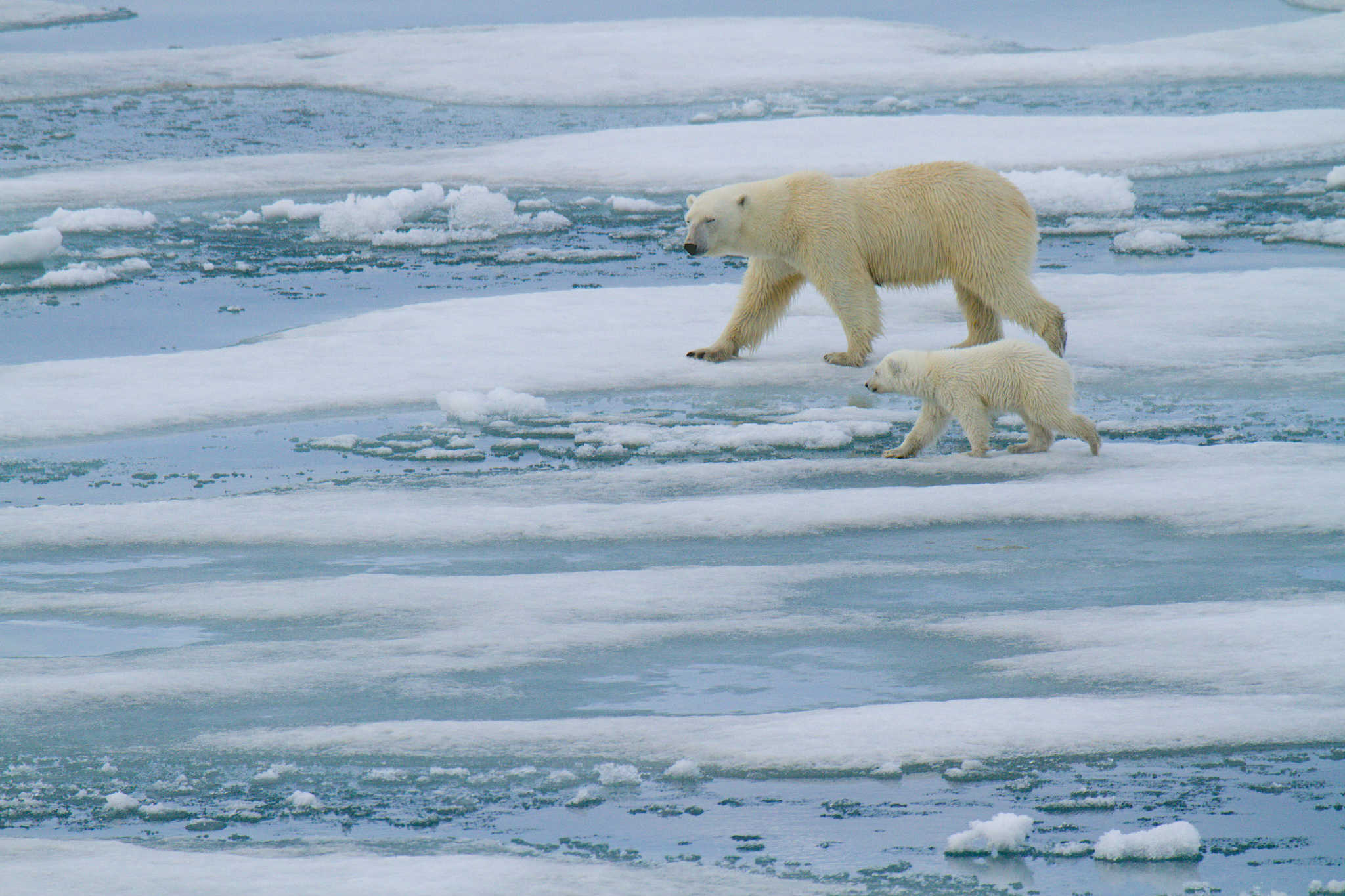Share this article
Wildlife Featured in this article
- polar bear
Study quantifies greenhouse gas impacts on polar bears
The new research addresses an Interior memo limiting climate considerations
Researchers say they are able for the first time to quantify the impact of greenhouse gas emissions on polar bear populations. They hope the finding will allow U.S. Fish and Wildlife officials to get past current restrictions and review the effects of carbon-emitting projects on polar bear populations, even thousands of miles away.
“I’m really hoping that this is going to be a major game changer,” said Steven Amstrup, lead author of the study published in Science. Amstrup is chief scientist emeritus at Polar Bears International and an adjunct professor at the University of Wyoming.
Polar bears (Ursus maritimus) were the first species protected under the ESA specifically because of threats from climate change. Warming temperatures already have imperiled some populations by melting sea ice, which the bears depend on to hunt seals.
An Interior Department legal opinion, however, has prevented the ESA from including impacts of greenhouse gases in reviews of whether a proposed action could further imperil the species. In a 2008 memo, David Bernhardt, then the Interior Department solicitor in the George W. Bush administration, determined that emissions could not be considered under the ESA unless officials could separate the impacts of a specific project from overall greenhouse gas emissions.
“Although polar bears were listed because of the threat of global warming, the emissions that cause global warming have not been considered when new projects have been proposed,” Amstrup said. “We could wave our hands and say, ‘As it gets warmer there’s going to be less ice and that will negatively impact polar bears,’ but we couldn’t quantify the relationship.”
The new study addressed the Bernhardt memo by quantifying the greenhouse emissions of specific projects and linking them to declines in polar bear cub survival.
“It could have a big effect,” said Martha Williams, director of the U.S. Fish and Wildlife Service. Interviewed before the study was published Thursday afternoon, Williams said she was not aware of the research, but she said findings like it could help inform how the agency conducts what are known as Section 7 reviews of projects under the ESA.
“I’m not entirely surprised that we are getting to a point with science where we can better parse out those direct effects or better parse out causation,” she said. “I think that’s fascinating, and I think that can only be helpful.”
The study builds on a 2020 paper in Nature Climate Change that linked polar bear survival with how long the bears can go without food during ice-free summer days. In the new research, biologists used regression analysis to determine the number of ice-free days caused by specific amounts of carbon emissions, completing the connection from emissions through ice-free days to demographic impact. That would allow scientists to determine how much impact an individual project could have on polar bear cub recruitment.
For instance, the researchers found that the hundreds of power plants in the U.S. will emit over 60 gigatons of emissions over 30 years, reducing cub recruitment in the Southern Beaufort Sea polar bear population by about 4%.
“We focused on the survival of cubs,” Amstrup said, “because recruitment is the first demographic variable to be impacted as foraging time is restricted and fasts become longer. Also if a population isn’t recruiting new young, it can’t persist.”
While the study focused on polar bears, Amstrup believes it could open the door to review how greenhouse gas-emitting projects affect other species threatened by climate change, including beach-nesting sea turtles at risk from sea-level rise and coral reefs impacted by bleaching events in warming waters. The process used to address the loss of sea ice could also be applied by conservationists elsewhere to help rein in climate change around the world, he said.
“Everything is connected,” Amstrup said. “We all depend on the same ecosystem services. The importance of Arctic sea ice in stabilizing the global climate means saving sea ice habitat goes far beyond polar bears. To the extent that saving polar bears benefits the climate elsewhere, it will benefit all life on earth.”
Header Image: A new study seeks to quantify the effects of greenhouse gases on polar bear populations. Credit: Kt Miller/Polar Bears International








